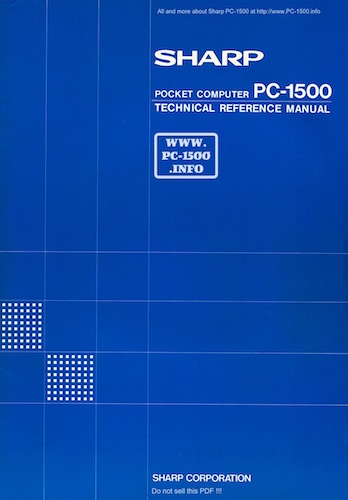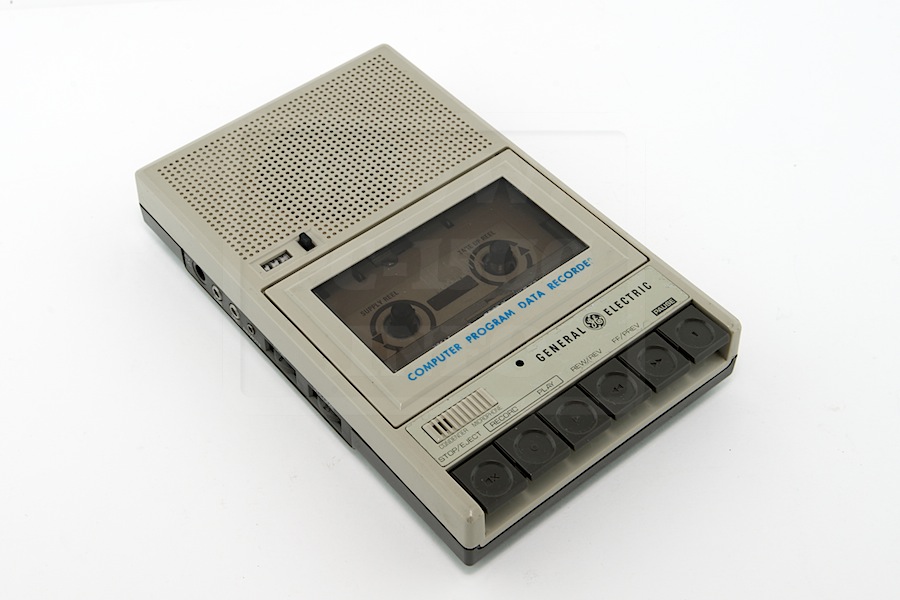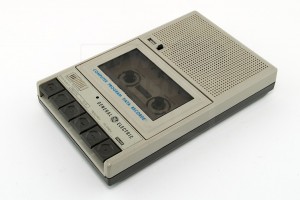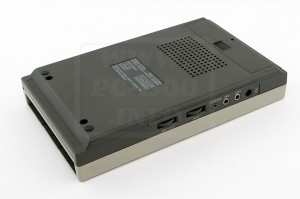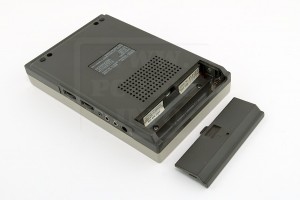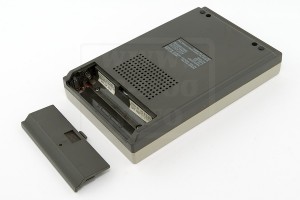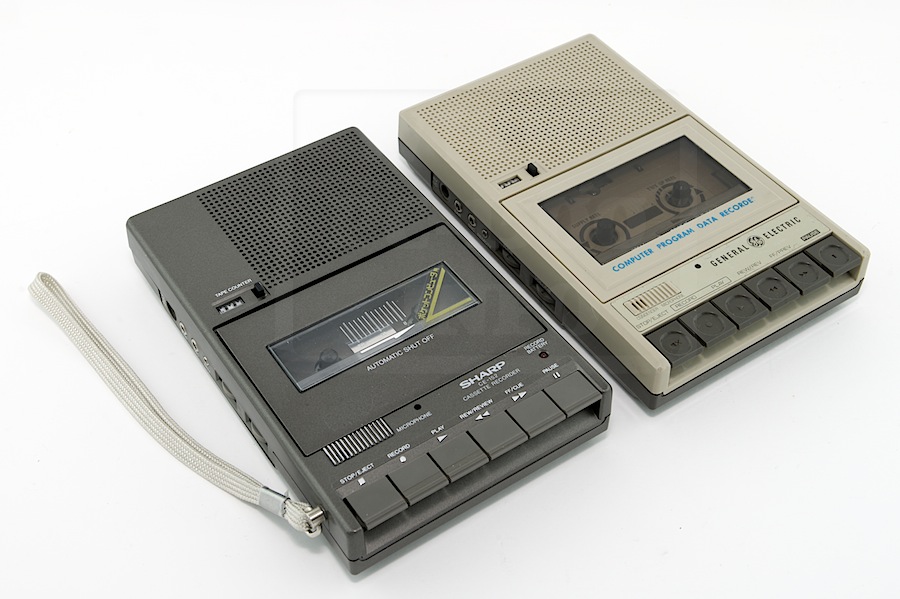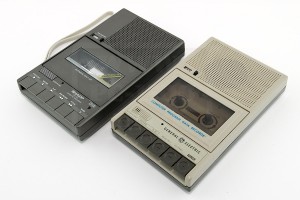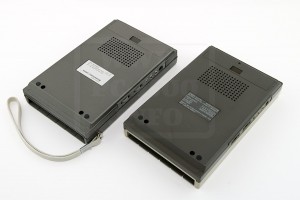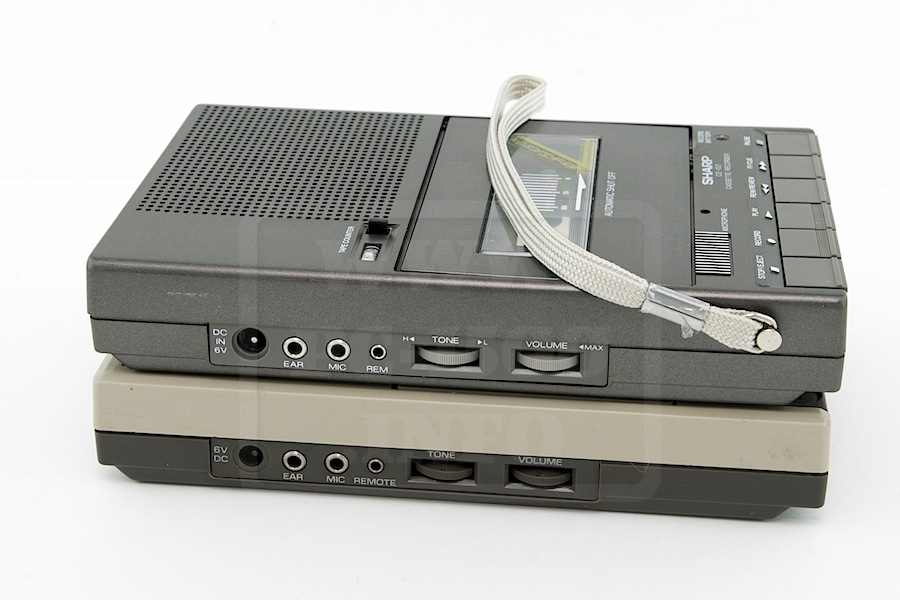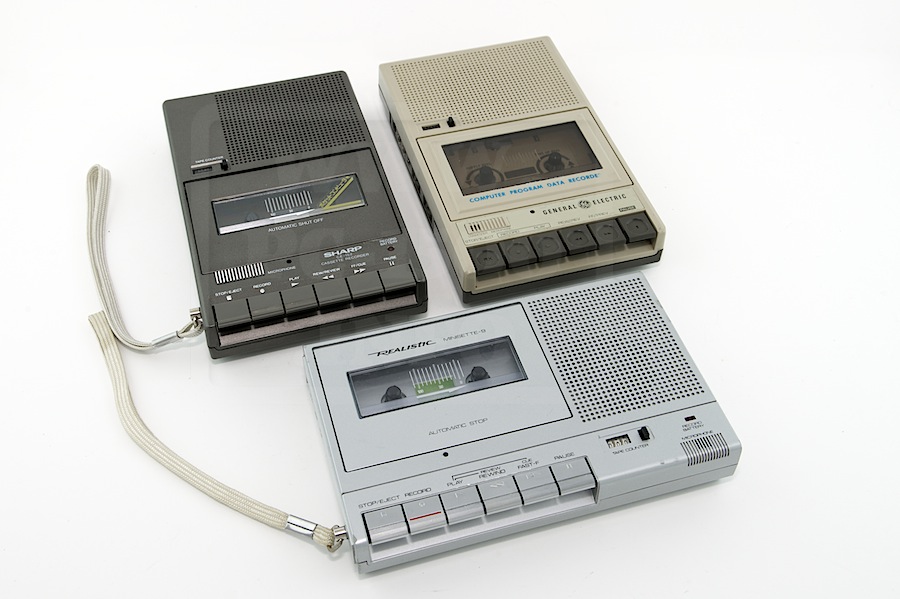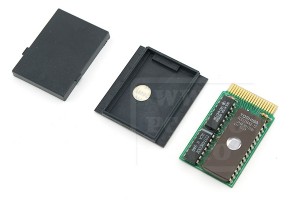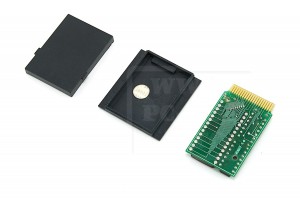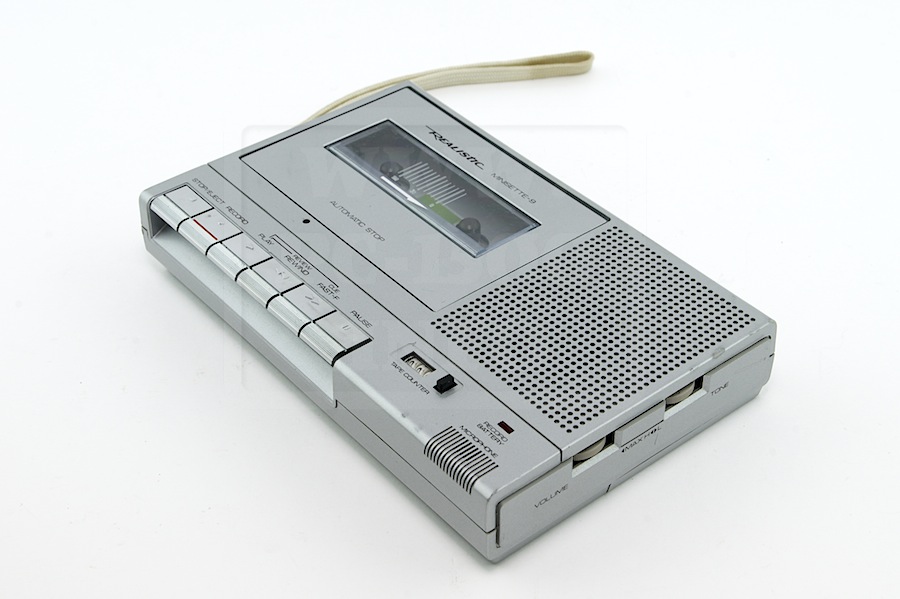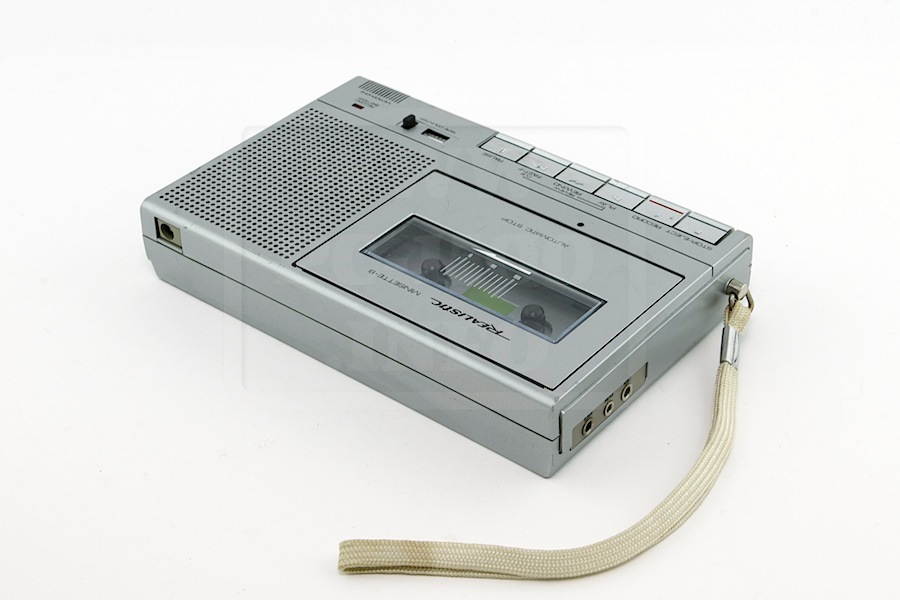If you want to learn the PC-1500 internals you must read this book.
You will find lot of informations :
– LH5801 Microprocessor
– LH-5810/LH-5811 I/O port controller
– PC-1500 hardware description
– PC-1500 software
– Machine language reference
…
Category Archives: The Family
Magazine : TRS-80 Microcomputer News
I have published lot about French, German and Swiss magazines or Club papers.
Now lets talk about one US magazine !
The TRS-80 Microcomputer News was published from January 1981 to June 1984.
A new pocket computer appear in the May 1982 edition : the TRS-80 PC2 !
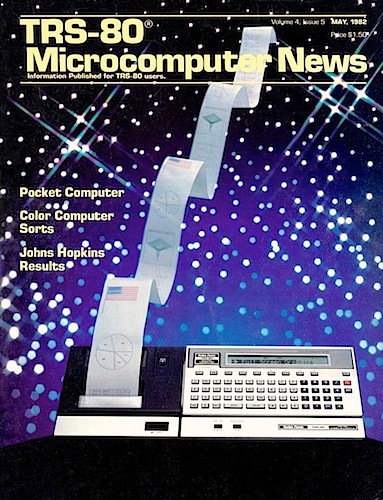
You can discover the whole collection at Color Computer Archive
If you own the Pocketcomputer Newsletter please contact me…
CN-2000 : One navigation system for the Sharp PC-1500
If you loose your way ask your PC-1500 !
Here is a small navigation system for the PC-1500 : the CN-2000 from InfoCenter, Inc.

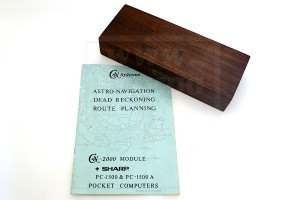
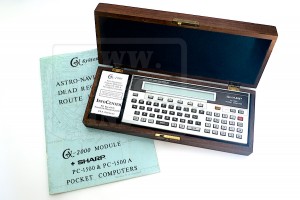
It’s stored in a very nice wood box.
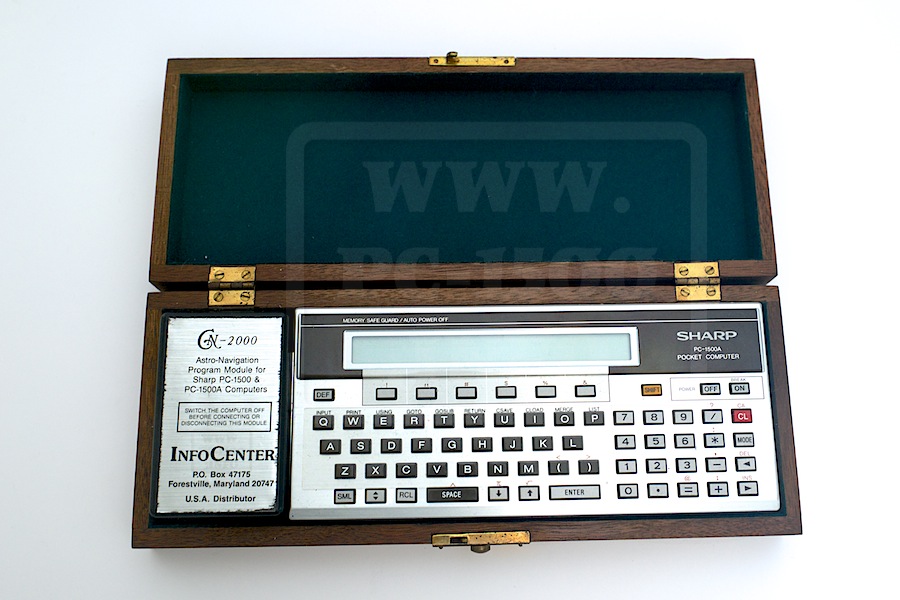
The CN-2000 can be plugged to a PC-1500 or PC-1500A.
You have a module to connect on the 60 pins connector and a user manual.
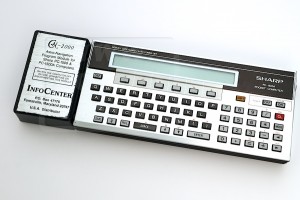
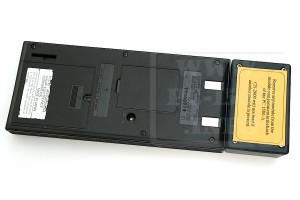
The module is in a plastic box.
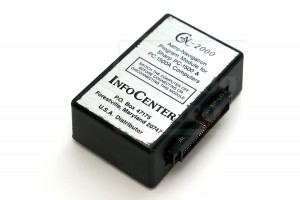
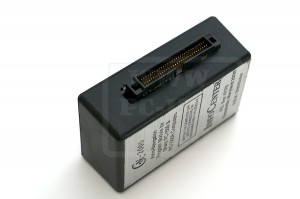
But when you open the box… you are far away from a professional system !
The box is not closed by the screws, it’s closed by some silicon glue.
The 4 screws are very short and fixed by the same glue.
And the board looks like self made but not pro with green paint.
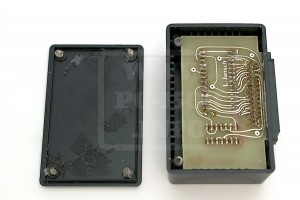
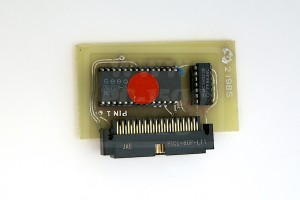
The program is BASIC and stored in the EPROM. It’s read protected for common users.
Here is the user manual :
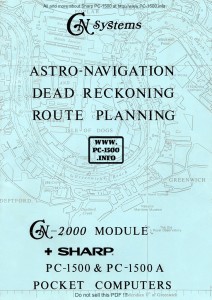 Download
Download
If you want to read more about navigation with this module there is “The navigator’s newsletter”
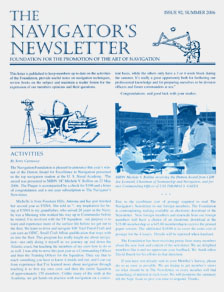
Go to the Newsletter archives…
And i have found a small paper in the Yatching magazine talking about the CN-2000 :
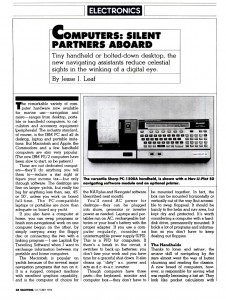
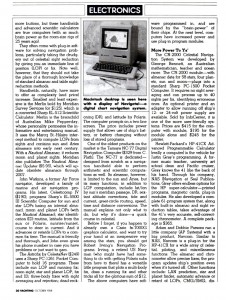
CE-152 : The clone by GENERAL ELECTRIC
EDTech Inc. : Administrator ROM module
The PC-1500 is a really well designed pocket computer and offers many ways to extend it’s software and hardware capabilities.
Some companies were seduced by the Sharp solution and it’s “owner” memory modules.
EDTech was one of these companies and were offering a solution for education administrators :
(Picture taken from eBay)
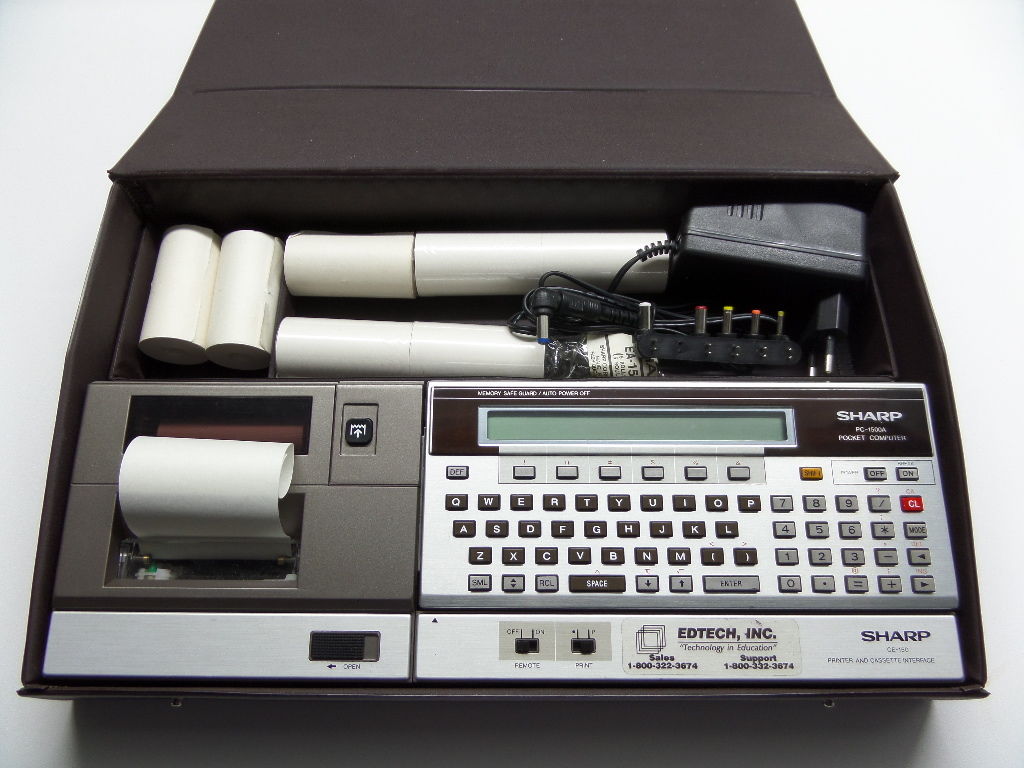
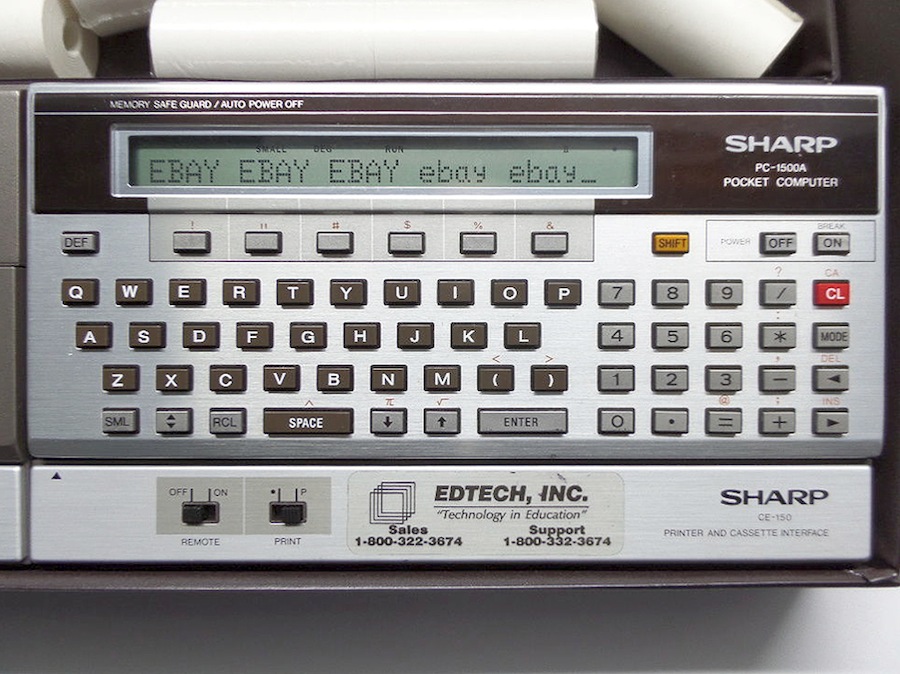
Externally it looks like the PC-1500A + CE-150.
But internally there is a custom memory module :
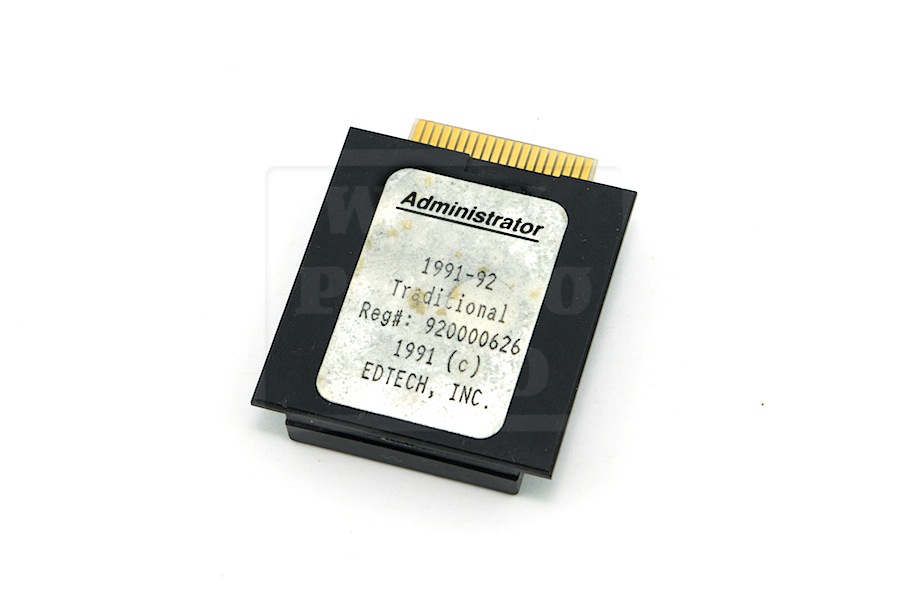
We have to distinguish three kinds of memory modules :
– RAMs stored between &0000 to &3FFF (like 4KB CE-151, 8KB CE-155, 8KB CE-159, 16KB CE-161 or 2x16KB CE-163)
– ROMs or EProms stored between &8000 to &BFFF (that extends the system with Basic instructions)
– Pseudo ROMs stored between &0000 to &3FFF (like the 7,8KB CE-160 used to store custom invisible Basic programs)
– EProms stored between &0000 to &3FFF used to store invisible Basic programs
The EDTech ROM is in this last case.
But if you understand address decoding “&0000 to &3FFF” is only 16KB wide.
On this module there is a TTL 74LS73 IC. It’s a dual J-K flip-flop with clear.
It’s function is to select one of the two 16KB pages.
Open the Technical Reference Manual and look for memory configuration and /S3 signal.
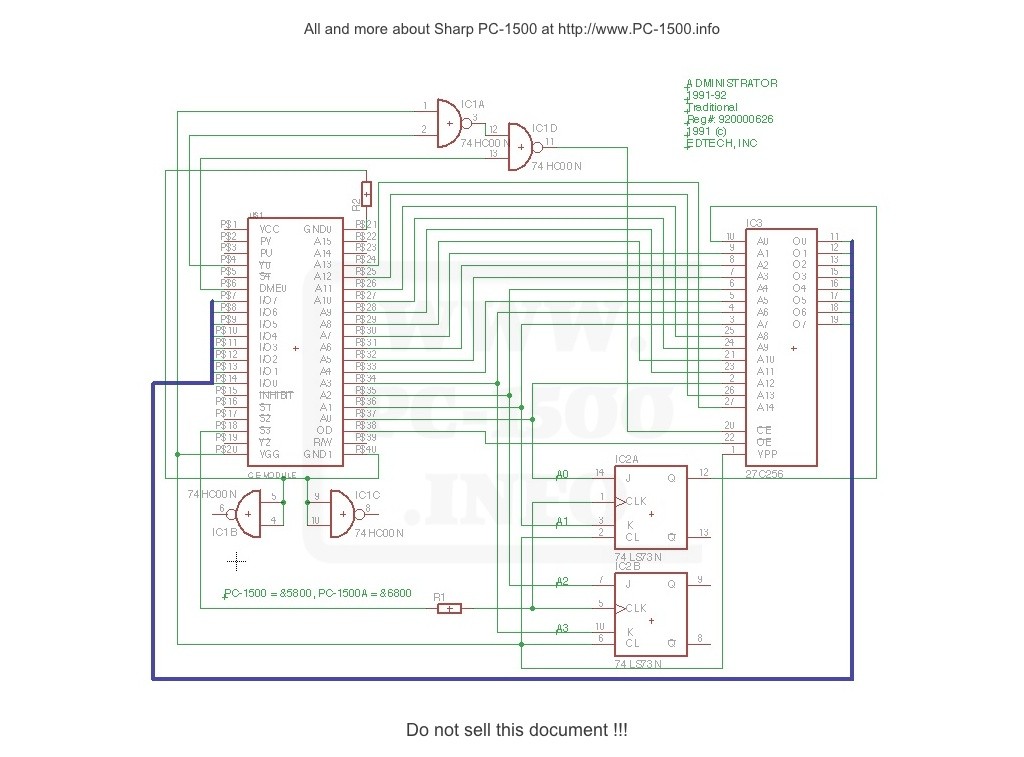
On the PC-1500 this signal select a memory zone starting at &5800.
On the PC-150A this signal select a memory zone starting at &6800.
Nice, this can work with the two pocket computers.
On my schematics you can see it connected to the CLK pin of the Flip-flop.
Now examine the content of each 16KB page (only the beginning, the rest is the EDTech program)… lines 11, 40 and 41
1st page :
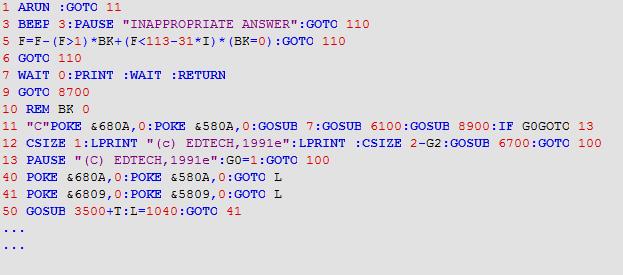
2nd page :

The POKE instruction writes a value to a memory case. By this way the program can swap the page.
Depending on the address it writes a 0 or 1 on the J and K entries and the clock push it to the Q and /Q outputs.
It’s a very nice design, isn’t it ?
I asked EDTech to get some informations and maybe a user manual.
They answered but nobody was able to help me.
Can you ?
Contact me if you have other “non Sharp” modules… 😉
CE-152 : The Realistic version
CE-152 : Inside and problem solving
This morning i received a mail from an australian friend, Bronte, telling me about belts problems in his CE-152.
Do you have problems with your Sharp CE-152 or want to look inside ?
Someone explains this tape recorder better than i can do : www.petervis.com
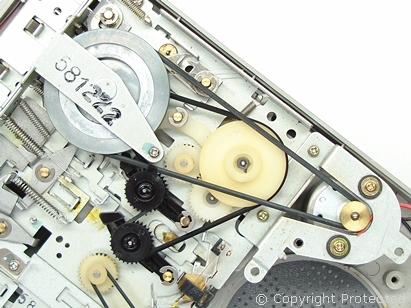
You can find the belts on eBay. But some vendors are very expensive… search… search…
For example : this one in China or this one in UK
BMC : The MC-12 user manual and MC-12A supplement
Hello, we all have to thank AXEL for these documents !
I contacted him some days ago about his MC-12A picture on his website :
http://www.askrprojects.net/calcs/calcs.html
He searched everywhere in his hard-drives and found two scans of the manuals.
The pictures had black margins with text inside.
With my favorite image processing software (Aperture) i corrected it, sometimes with letters by letters words reconstructions.
Here are the manuals :
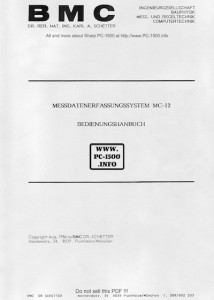 Download | 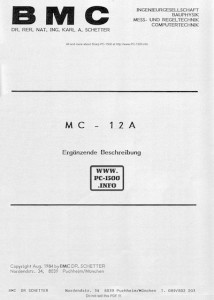 Download |
Thanks you again Axel !
TRAMsoft Gmbh, Swiss know-how ! (part 4)
It’s time to let Reto Ambühlerr describe his company, products and story :
TRAMsoft GmbH – History and Facts
1. The Name
The name TRAMsoft derives from the initials of the founders Thomas Müller and Reto Ambühler. It is written in 4 uppercase and 4 lowercase letters to reflect the fact, that the SHARP PC-1500 supports uppercase and lowercase letters. The previous models supported only uppercase letters.
2. The Beginning
The company TRAMsoft Ambühler & Müller was founded in 1983 as a general partnership, but its history goes back to 1980, when Thomas and Reto discovered their passion for programmable pocket computers while they were students at the University for Applied Science, then known as “Technikum Winterthur”. They used their Texas TI-59 to solve many problems in math, physics, electro technics and many other disciplines during their study. Thomas once even wrote a program to find the measure of German poems.
In 1982 SHARP released the BASIC programmable pocket computer PC-1500. Thomas and Reto became fascinated by this machine from the very beginning. Even though SHARP did not unveil the details about the internal programming, the two started to explore the operating system step by step. After many sleepless nights, they disassembled the complete operating system by a kind of reverse-engineering the operating system’s ROM. It turned out, that the PC-1500 was design for flexibility and extensibility at a very high degree. Thomas and Reto developed not only an external hardware that allowed to add new BASIC commands, but they also wrote their own assembler to compose the required software.
They continued to develop additional hardware and software for various purposes, even for industrial applications.3. The Products
3.1 Toolkit
The TRAMsoft Toolkit was the first commercial product sold by TRAMsoft. The hardware consisted basically of an 8 kB EPROM and a frequency modulation/demodulation unit. The former could be programmed to store up to 4 different sets of BASIC commands, the latter supported writing and reading programs to and from a cassette recorder.
TOOL1 provided a set of additional BASIC commands for easier and more efficient editing, such as FIND and RENUMBER plus commands for modular programming.
TOOL2 provided 25 times faster save and load operation than the built-in CSAVE and CLOAD commands plus additional options to support modular programming.
TOOL3 was a collection of additional functions such as decimal – hexadecimal conversion, extended error handling, operations to manipulate variables including REDIM, string manipulation and more.
TOOL4 provided extensive support for statistics and so called “synthetical programming”. The latter means that the BASIC program could modify itself during execution.3.2 Expansion Box
With the TRAMsoft Toolkit and optional devices from SHARP, users were faced with the problem, that they could not use more than one external device at a time. To overcome this problem, TRAMsoft developed the so called expansion box or E-Box for short. The E-Box provided four connectors, so users could connect up to four external devices at the same time. Each port could either be configured by switches or by software. For maximum flexibility, read and write access to each port could be controlled individually. This allowed to even connect devices which covered the same address range.
3.3 A/D Converter
Thomas and Reto always had been fascinated by data acquisition and process control applications. Therefore they developed a data acquisition interface or A/D converter for short. The first device, which became known as “Standard A/D Converter”, supported 8 input channels for data acquisition and 4 digital output lines. It provided up to 6 conversions per second with 12 bit resolution.
When the PC-1600 came out, even more sophisticated applications became possible and faster data conversion was needed. TRAMsoft developed the “Advanced A/D Converter” which supported up to 1500 conversions per second. It also had 8 channels and 4 digital output lines, but the number of A/D channels could be doubled with an optional extension which also added 4 digital input and 10 digital output lines. In order to read and store data at such a high rate, the software had to be written in machine language. It stored the data into a DIM variable so it could be further processed with programs written in BASIC. An optional program written in machine language even provided asynchronous data acquisition, which means a program running in the background collected and stored data while a BASIC program run in the foreground, both completely independent of each other.3.4 Parallel/Floppy Interface
With the increasing number of programs and their growing size, a need for nicer printing and more comfortable storing arose. Both issues were addressed with the parallel/floppy interface. The parallel interface could either be used for input/output operations or to connect a printer with a parallel interface, also known as Centronics interface. The built-in software provided commands such as LLIST to print out program listings and LPRINT to print output from a BASIC program.
The floppy interface on the other hand supported storing and loading programs and date to and from floppy discs. The interface supported the Commodore VC-1541 5¼” floppy drive.3.5 Memory Modules
The PC-1500 and the PC-1500A were both equipped with a slot which could accommodate a memory module with up to 32 kB capacity. TRAMsoft first developed a 32 kB memory module which could either be equipped with a RAM or an EPROM chip. The former provided additional space for BASIC programs, DIM variables and/or software written in machine language, the latter was suited to distribute software.
The PC-1600 was equipped with two slots, one could accommodate a memory module with up to 32 kB, the second even up 256 kB RAM. TRAMsoft offered modules from 32 kb to 256 kB, some even with a backup battery so they would no lose the data when removed from the pocket computer.4. Some Applications
In the mid 80s, TRAMsoft started to develop a number of custom applications. Even 30 years later, some of them are still in commercial use! Others had been migrated to PC-based applications, either by TRAMsoft or by other companies.
4.1 Termites Counter
A member of the zoological institute of the University of Berne had the task to find out, how quick termites react to changes in the environment. He wanted to place up to 32 light barriers around a termites’ nest to count the number of animals heading in a particular direction. He placed some food at one spot and analyzed the changes in the moving pattern of the termites. Since he did his experiments at a remote location in Africa where no electrical power was available, he needed a system that he could run on a car battery. The PC-1600 plus a modified TRAMsoft parallel/floppy-interface was the perfect solution. TRAMsoft also provided the software to collect the data, store it on a floppy disk, to perform statistical analysis and to print out the results.
4.2 Berst
From the very beginning, TRAMsoft worked together with a company located in Biel which was specialized in robotics applications. They had tremendous skills in mechanics, but only limited experiences in electronics. One of the many projects we did together was an appliance to test the safety vent of commercial batteries. The goal was to apply pressure at two particular levels were the vent must remain seal and then increase the pressure until the vent breaks. The pressure where the vent broke must be within a certain range. They used a PC-1600 plus a TRAMsoft Advanced A/D converter to measure pressure and to control the pump. Many years later, TRAMsoft adapted the system to a PC based solution.
4.3 Resistor Tester
The goal of this appliance was to test precision resistors. A PC-1600 combined with a TRAMsoft A/D Converter was used to apply a high precision voltage to a resistor and to measure the current. The software computed the resulting resistance and tested whether the result was in the required range. A digital output line was used to indicate whether the resistor was ok or not.
Reto Ambühler
Thank you Reto !
Do you remember previous articles ?
http://www.pc-1500.info/?s=TRAMsoft
Added to the menu : “Help needed”
Building this website to remind the worldwide story of the Sharp PC-1500 is a crazy hobby. We are in 2015, 33 years after the first PC-1500, and lot of informations are going to disappear in the next years. All the people having worked on the PC-1500 projects, all the club members, all the resellers, all the users are from 50 to 80 years old. Some contacts told me “i have cleaned my house and don’t have anything left”, “all is gone to trash some years ago”… That’s very sad, isn’t it ?
A few months ago i have installed a statistic tool and each month i can see the really nice result of 3000 unique visitors and 7000 visits ! Do we need better proof that the PC-1500 is still popular in 2015 ? NO ! Thank you to all my readers ! Some comments on the articles or guestbook are welcome 😉
But some help is needed to save PC-1500 related items and papers before they go trash !
This is the role of my “Help needed” menu. It tell how you can help me and what i’m currently looking for.
Thank you all !
Eric.
